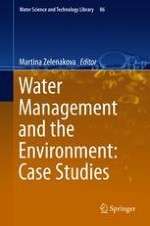2018 | OriginalPaper | Chapter
11. Occurrence and Removal of Emerging Micropollutants from Urban Wastewater
Authors : Petr Hlavínek, Adéla Žižlavská
Published in: Water Management and the Environment: Case Studies
Publisher: Springer International Publishing
Activate our intelligent search to find suitable subject content or patents.
Select sections of text to find matching patents with Artificial Intelligence. powered by
Select sections of text to find additional relevant content using AI-assisted search. powered by
